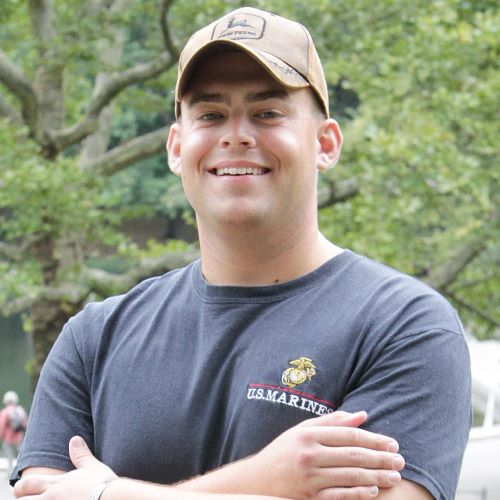New York Blood Center Enterprises (NYBCe) is one of the nation’s largest independent blood centers and a premier nonprofit institution. Founded in 1964, the organization seeks to fulfill their four-part mission: provide high-quality blood products and stem cell services, conduct innovative research, develop new products and technologies that make a humanitarian impact, and train the next generation of industry leaders.
NYBCe leverages gifts and financial contributions to support various aspects of this mission, including maintaining daily operations and conducting ground-breaking research. Today, donations also go towards their COVID-19 response efforts such as vaccine research and development and COVID-19 convalescent plasma (CCP) collection.
While you might be aware of where your donation dollars are going, it’s not always as easy to see the direct impact they have. Let’s take a look at how financial contributions help NYBCe create a healthier future for communities on a local, national, and global scale.
Saving Lives, Connecting Communities
From organ transplants to heart surgeries, blood transfusions are among the most common medical procedures performed in hospitals. Today’s advanced medical care relies on an ample and readily available blood supply. When a person donates one unit of blood, it can be separated into individual components to save multiple lives.
Plasma, for example, helps patients with blood diseases, low platelet counts, or non-functioning platelets at high risk of bleeding, such as chemotherapy and bone marrow transplant patients. Platelets, on the other hand, are essential to ensuring a patient’s blood can clot when needed and contain growth factors that help repair damaged body tissue.
On average, NYBCe collects 4,000 units of blood each day and distributes almost 1 million blood products annually. They also provide more than 450,000 laboratory and multi-assay infectious disease tests and over 12,500 specialty clinical procedures to hospitals nationwide. Blood is collected at 10,000+ mobile blood drives every year, though the COVID-19 pandemic has decreased this number, resulting in blood supply shortages.
Financial contributions help NYBCe provide a safe and reliable source of blood and blood products to more than twenty million people each year. Philanthropy also helps the non-profit improve and expand its donor recruitment efforts, which increases blood supply and improves the lives of countless individuals.
Recipient Stories
Let’s meet some of the people who have benefited from NYBCe’s blood products and medical services.
Joanna, Hypogammaglobulinemia Patient

Joanna, Hypogammaglobulinemia Patient
Joanna has hypogammaglobulinemia, an immune deficiency disease requiring regular infusions of immunoglobulin (antibodies that help fight infections) derived from plasma.
Hypogammaglobulinemia patients typically suffer respiratory problems, sinus and ear infections, and gastrointestinal disorders and also face greater risk for more serious infections. “Without plasma donations, my life would have likely ended before my marriage even began,” Joanna said. “Blood donations save countless lives whether it’s needed for an illness, an emergency, or even to manage a chronic condition like mine.”
Chris, Heart Transplant and Stroke Survivor

Chris, Heart Transplant and Stroke Survivor
Chris is a medically retired U.S. Marine and motivational speaker who is also a heart transplant and stroke survivor. During his 10-day leave after completing boot camp, he suddenly lost his vision and motor functions.
Chris suffered a massive stroke and was rushed to Robert Wood Johnson University Hospital in New Brunswick, New Jersey. He courageously battled through two open heart surgeries, the first of which was to put in a heart pump — an LVAD — to keep him alive while he waited for a heart transplant. The second surgery was on April 9, 2013, when he received his new heart.
Blood donors play a crucial role in maintaining NYBCe’s blood supply. However, financial contributors are also needed to increase donor recruitment and support the nonprofits everyday life-saving operations.
NYBCe Is on the Forefront of Blood Research
In addition to general operations, financial gift givers help NYBCe conduct groundbreaking research that paves the way for new blood-related products, techniques, and therapies. In turn, this research has a direct humanitarian impact, allowing the organization to accomplish goals such as controlling the spread of HIV, deepening the understanding of various blood diseases, pivoting resources to focus on COVID-19 disease research, and more.
Investing in NYBCe’s research division, the Lindsley F. Kimball Research Institute (LFKRI), serves the immediate need to understand key areas of research including transfusion medicine, epidemiology, hematology, cell therapy, and infectious disease.
LFKRI member Dr. Bruce Sachais, for example, is leading NYBCe’s Platelet Research Laboratory’s investigation of Heparin-Induced Thrombocytopenia (HIT). HIT is a serious complication of heparin therapy resulting in blockage to blood vessels. The consequences of HIT are dire and can cause blood clots to form within the blood vessels, resulting in limb amputations, strokes, heart attacks, and death.
The Platelet Research Laboratory is currently focused on improved diagnosis and novel therapeutics for HIT. Dr. Sachais’ research has identified a novel approach to the treatment and prevention of HITT that directly addresses the disorder’s pathophysiology with little or no increased risk of bleeding and has good drug properties for IV administration.
Financial gift givers and investors can help the Platelet Research Laboratory reach the next step in their research: completing an Investigational New Drug (IND) Application.
Help Support NYBCe’s Mission
When you give to NYBCe, you’re supporting an organization whose blood products and ground-breaking research have a direct humanitarian impact on communities on a local, national, and global scale.
If you have not yet made a financial contribution to New York Blood Center Enterprises, please consider doing so. You can donate now online to give to NYBCe’s daily operations, COVID-19 Fund, research, medical services, or educational opportunities. Thank you for your support.